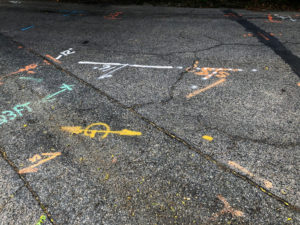
By Anne-Marie Lambert
Two key drivers are nudging Belmont to clean up our waterways and protect us from the storms coming with climate change: the threat behind an Environmental Protection Agency Consent Order and the tempting Massachusetts Municipal Vulnerability Program (MVP)
Every six months, Belmont is obliged to file a report with the New England region of the federal Environmental Protection Agency (EPA) to demonstrate compliance with a 2017 consent order under the Clean Water Act. The town has to show steady progress cleaning up the sewage pollution Belmont has sent to Boston Harbor due to the intermingling of Belmont’s sewer and stormwater systems.
Belmont’s waste ends up in Boston Harbor because the contents of our leaky sewers travel into our rivers and streams by way of nearby stormwater pipes. Most of the sewage winds up in Winn’s Brook or Wellington Brook, both of which feed into Little Pond or Little River. These waterways continue into Alewife Brook near the Alewife MBTA station. Alewife Brook then winds north through Cambridge and Somerville until it enters the Mystic River by Dilboy Stadium in Somerville. It’s surprisingly difficult to determine if the residents at any particular house—maybe yours or mine—are innocently contributing to Boston Harbor pollution with every flush and laundry load. (See “Hidden Leaks in Pipes from Street to House Pollute Waterways,” Belmont Citizens Forum Newsletter, March 2018.)
There will be a big difference between the disappointing July 2020 EPA compliance report and the upcoming January 2021 report. This year, the town decided to spend the first half of the year drawing up designs to bundle up all the known repair work into one umbrella contract in the second half of the year.
During the first six months of 2020, no new sewer rehabilitation work was completed. Moreover, some of the 2020 measurements revealed that certain repairs done in 2019 were insufficient to make the storm drains run clean. In particular, there are still elevated levels of E. coli, a hazardous bacteria carried in sewage, in the area around Bow Road, Randolph Street, and Lincoln Street, indicating an additional sewage source has emerged. Most 2020 measurements, though, showed the storm drains running clean, indicating that other 2019 rehabilitation work had done the trick.
As part of preparing designs, the town’s contractor sometimes sends a camera down the drain to inspect for cracks and the general condition of each pipe. They will often see mineral deposits around joints or cracks, indicating that seepage occurred at some point in the past. Cameras can also detect whether tree roots are damaging the pipe. Sometimes the camera shows some surprises: under Dalton Road, earlier this year the camera showed a plastic baseball bat stuck in the drain.
This summer, the $493,220.51 comprehensive sewer system rehabilitation contract was awarded to National Water Main Cleaning Company of Canton (see “Cleaning Belmont’s Water Means More Work,” Belmont Citizens Forum Newsletter, May 2020). This project is funded under the Massachusetts Water Resources Authority (MWRA) I/I Grant Loan Program, and is expected to be completed in December. Work is underway to address issues found in 2019. Most of the work is lining sewer and stormwater mains under the road, work which can be done between manholes without digging up the streets. It also includes some repair of broken pipes and lining of sewer and stormwater lateral lines (the smaller pipes which run between each home and the main underneath our roads). The contract addresses at least one illicit connection, where a house had been sending sewage directly to the storm drain instead of the sewer system.
The Sewer System Rehabilitation contract includes work in the following locations:
- Maple Street, Bartlett Avenue
- Oliver Road
- Knox Road, Bellington Road, Herman Road
- Shaw Road, Herbert Road, Houghton Road
- Livermore Road
- Betts Road
- Hoitt Road, Westlund Road
- Hill Road
Many factors go into deciding when to take a fix-as-you-go approach and when to bundle work into a large project. As far as I can tell, the main limitation preventing the town from moving faster to clean up our pollution continues to be the availability of town staff qualified to oversee this type of contract work. Without the staff to oversee the work, it’s challenging to take advantage of all the funds made available through the MWRA I/I loan program, and difficult to pursue more measurement and rehabilitation projects in parallel.
Nonetheless, the prospect of additional state funds motivated the town to identify even more potential projects related to stormwater: Belmont submitted an application for a Planning Grant under Governor Baker’s Municipal Vulnerability Assessment (MVP) program. Unfortunately, the town was not granted an MVP Planning Grant this year. Glenn Clancy, Belmont’s director of Community Development, expects to learn soon what factors may have influenced that decision.
The exercise of preparing the application helped the town identify and prioritize key vulnerabilities and countermeasures to make the town more resilient to the effects of climate change. It also required the town to identify funding sources and regional partnerships which might help overcome the current oversight challenges. As storms become more intense, I’m hopeful the Select Board prioritizes asking Clancy and his staff to propose creative ways to oversee and fund the priority projects identified in the MVP application.
I remain impressed with the power of legislation and government leadership at different levels. The Massachusetts Municipal Vulnerability Assessment Program (MVP) and the Clean Water Act, as enforced through the EPA Consent Order, together served as a carrot and stick to motivate our town leaders to figure out ways to take concrete actions they were unlikely to have taken otherwise.
Ultimately, though, the most powerful force of all is the voice of citizens. Until more of us make obvious to local leaders that cleaning up our waterways and making us more resilient to climate change really are top priorities, they will spend their time and energy addressing other issues. It’s time for citizens to find and create opportunities to help town leaders celebrate victories and to have their back when they invest even more in resilient and clean waterways. It’s time to ask them which of the priority MVP projects they will find a way to fund, and to ask what it would take to make even faster progress on cleaning up our waterways. It doesn’t have to be this slow.
Anne-Marie Lambert is a former director of the Belmont Citizens Forum.



Sorry, the comment form is closed at this time.